
Hello Beautiful Humans, and welcome to our first blog post!
My name is Katie, I’ve been Todd Alan’s apprentice for about eight years now. I help him behind the scenes with melting, rolling, pulling, annealing, twisting, gem setting, adding outer bands, polishing, finishing work and much more – all while learning the different braids.
In my time working here, I’ve learned a lot. For instance, before I started here I thought silver and gold were equal in price and value and I thought white and rose gold were literally different types of metal. Now though, I think I’ve got a pretty good handle on things and I’ve loved the journey. So I thought, hey, maybe you all would like to come along too!
I’m calling this series the Jeweler’s Apprentice and it will entail deep dives into all sorts of topics in the jewelry trade. I’ve linked all my sources in case you’d like to read more about the things I discuss here. I really hope you enjoy – and please leave me a comment below to let me know what you think!
To start off this momentous occasion, I thought it was only fitting to take a deep dive into all things gold.
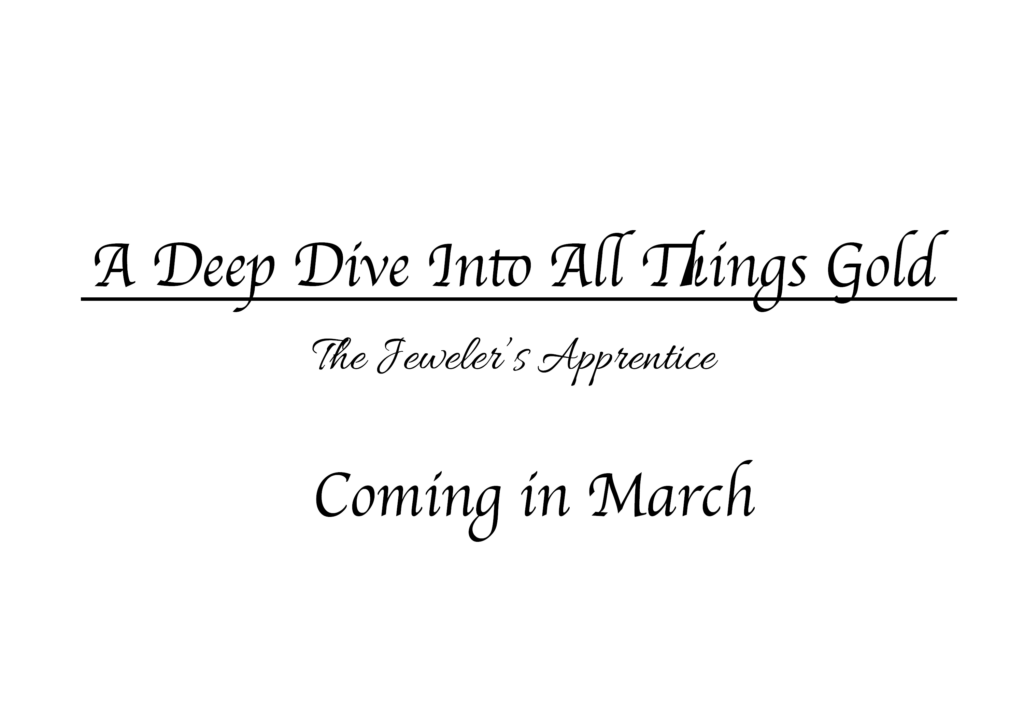
More of a video person? That’s ok, I’m making a YouTube Video just for you! Premiering in March.
Gold is found in every culture around the world and is used in things from ornate architecture, to art and sculptures, to jewelry. But what makes it so special? Why has it been valued and coveted so highly for all these years? Did you know gold comes in more than just yellow, white and rose? What makes something 10k versus 24k? Let’s find out together!
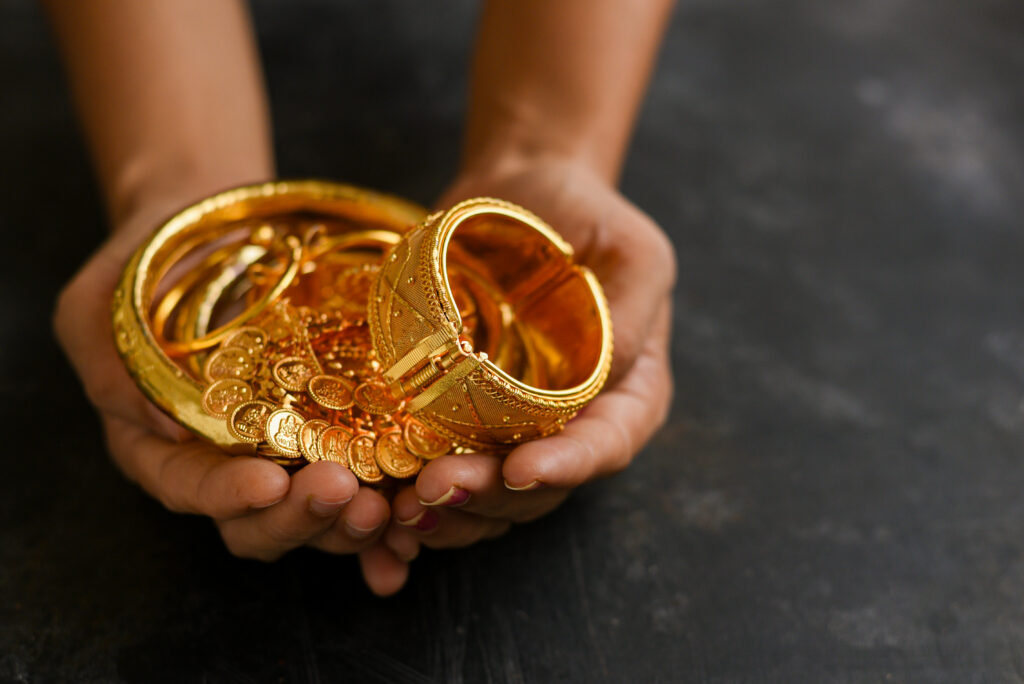
Gold is “a yellow metallic element that occurs naturally in pure form.”[1] It can be further defined as a “precious metal noted for its color, luster, malleability, and freedom from rust or tarnish.”[2] Its root is found in the Indo-European word for “gold” but originates even further back to the Proto-Indo-European root ghel which means “to shine”.
The word gold is found in many other root languages such as: Proto-Germanic gullthan, Middle Dutch gout, Dutch goud, Old Norse gull, Danish guld, and Gothic gulþ. However, its chemical symbol on the periodic table Au comes from the Latin word for gold Aurum which itself comes from the Greek term χρυσός, or khrysos.[2]


Gold is incredibly dense – which is to say, its mass is very high for the size that it takes up. All metals have a high density since their atoms are packed tightly into a small space but gold is one of the most dense and only osmium, iridium, platinum and rhenium are more dense than gold![3]
Gold is also a transition metal and as such has these attributes: it is lustrous, and is a good conductor of heat and electricity. [4]Of all other metals, gold is the most malleable (able to be hammered) and ductile (able to be pulled into wires).[5]
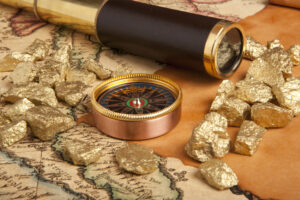
Guess what the first three elements known to man were? Copper, silver and gold! Early Egyptian and Mesopotamian civilizations would have been able to find it along the sand and silt of rivers and streams[5]and because gold is found in a pure, workable state – as opposed to metals found in ore-bodies which need to be smelted before they are useable – it was immediately apparent to early peoples that gold was something special and quickly became associated with deities, immortality and royalty.[6]
But what happened when all the visible gold had been gathered up from the various shorelines? Prospecting was one such solution – in ancient Egypt unshorn sheep skin was used as a sluice, dried, then shaken out to remove the gold (which is probably where we get the term “golden fleece”).[6] But this transitions us to how gold is primarily obtained: mining. Sadly, it’s not a pretty history and it’s not a pretty practice.
For centuries the use of slaves, convicted criminals, prisoners of war, political prisoners and exiles were forced into hard labor by those in power to attain more and more gold.[6] From the slaves of Early Byzantine[14], to Francisco Pizarro’s invasion and exploitation of the Incans[15], the desire for gold has toppled empires and enslaved countless peoples throughout the centuries. And today, sadly, mining can still be a very exploitative industry with some companies using child labor[16] and pretty much modern day slavery [17].
And as if that isn’t bad enough, it’s also really terrible for the environment. Gold mining is considered to be “one of the most destructive industries in the world. It can displace communities, contaminate drinking water, hurt workers, and destroy pristine environments. It pollutes water and land with mercury and cyanide, endangering the health of people and ecosystems.”[18]
Let’s take a pause here because I want to talk about our stance at Todd Alan Studios on environmentalism and the gold mining industry.
Human rights are incredibly important to Todd, Lyra and I.
The environment is incredibly important to Todd, Lyra and I.
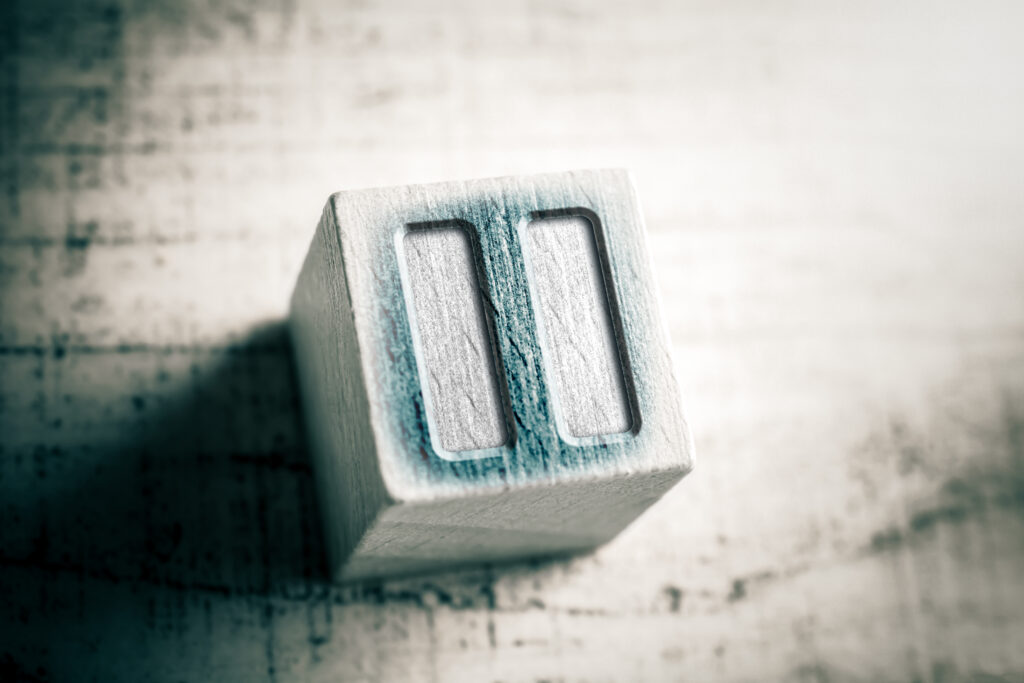
We take these issues very seriously. So when Todd began his career, he did his research and continues to stay up to date and ensure our sources remain green and conflict free. Todd only partners with reputable sources for all our gold, diamonds, gemstones, other materials and tools.
We work with two companies: Stuller – who has committed to using 100% recycled gold in all their manufacturing[19] – and Rio Grande – who promises to source responsibly and detail their methods of doing so.”[20]
When we can, we often recycle gold ourselves and use them to create pieces for the store. There are two ways to accomplish this. Todd can either take used gold rings as they are, then anneal, roll and pull until he has the strands he needs to braid. Or, he can take gold rings/jewelry, melt it down, pour it into ingots then roll and pull them into strands as well. If you’d like to be part of this process which is becoming known as “green wedding rings”, send us some used gold and we’ll reuse it for you. You can go to a pawn shop, an antique store or a vintage market and buy gold rings or pieces that are 14k or higher. Or maybe you even have some gold in your own collection that you don’t wear anymore, that would work too! All of this makes less of a carbon footprint than backing a car out of a driveway.
Please visit our Recycling Gold page to learn more.
Here are two videos he’s made, one following each process.

Bet you can guess what gold’s primary use is: jewelry. In fact of all the gold consumed yearly, 78% is used in jewelry. Is that higher or lower than you expected, I wonder – it was much lower than I thought, personally!
Next, we find gold is often used for coins, bullion and as backing for currency. Like the 147.3 million ounces of gold in Fort Knox.
Gold is also used in electronics such as cellphones, tvs, gps systems, motherboards, and even in aerospace equipment like satellites, vehicles and as mechanical lubricant, just to name a few.
The medical industry also uses a notable percentage of gold – think about the fact that gold teeth have been used for centuries.
Another notable use of gold is in awards: the Olympic medals, Oscars, and Grammys are all made from pure gold!
And last but not least we find gold is used in architecture and as building materials. For instance, gold is used in the production of some types of glass. If added when glass is being annealed, it gives the glass a ruby color. But it can also be added as a very thin coat on the surface of glass to reflect solar radiation. This is also why astronauts helmets have that gold coating, it protects their skin and eyes from the harmful, unfiltered rays of the sun when they’re floating about doing astronaut things in the vastness of space. Finally, we find that gold leaf is used as a gilding on the tops of structures like religious and government buildings.[21]
It’s even been speculated that the capstones of the Great Pyramids of Giza were gold plated!
And here is my very rough Photoshop rendition of what they might have looked like, haha. And you now see why I stick to bench work and Lyra handles the computer work!

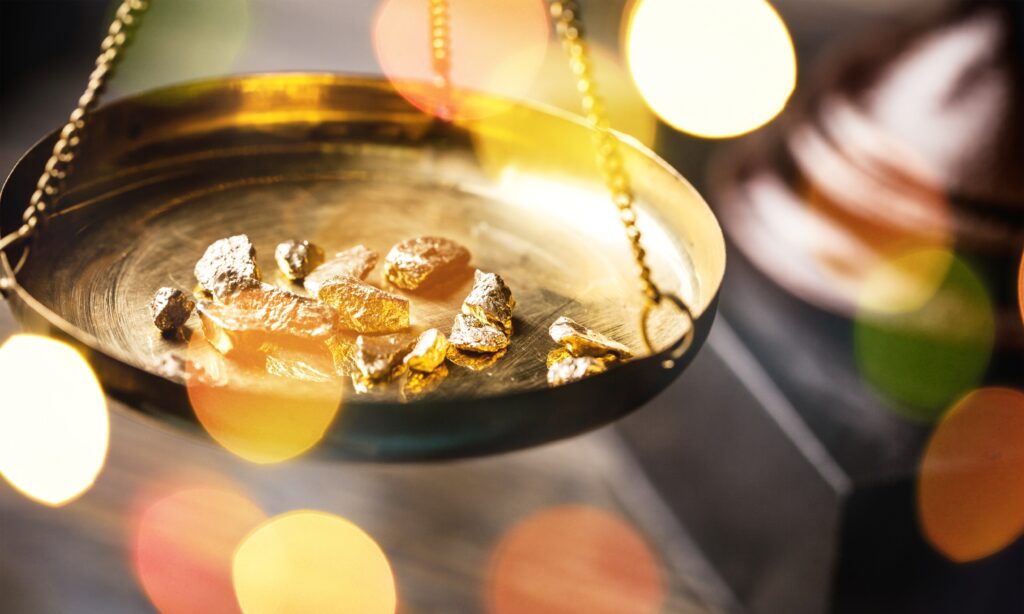
So, we measure the weight of gold in something called troy ounces but we measure gold’s purity, also called its finesse, in a scale from 1-24 karats. Each karat is 1/24 the part of the whole and comes out to 4.1667%.
As you might have surmised, pure gold is extremely soft – so soft in fact, that you can actually dent it with your fingernail. This, of course, means it would not stand up to repetitive handling and thus would not make for pieces that could be worn daily. To combat this, different metals can be added to pure gold as alloys to give stability or even change the color of the pure gold and we use karats to measure the ratio of gold to alloy.
24k gold is 99.95% pure and is an extremely rich, buttery yellow color with a tinge of orange in its hue. It is rarely used in jewelry in the West but is beloved all over Asia. In China, especially, it is given as a dowry by the bride’s family as an investment into the new couple’s future. This is usually done in a solid cast piece of jewelry that is sometimes worn on the wedding day but it usually kept safe for a rainy day.
Fun fact, pure gold (23k-24k) is actually edible![24]
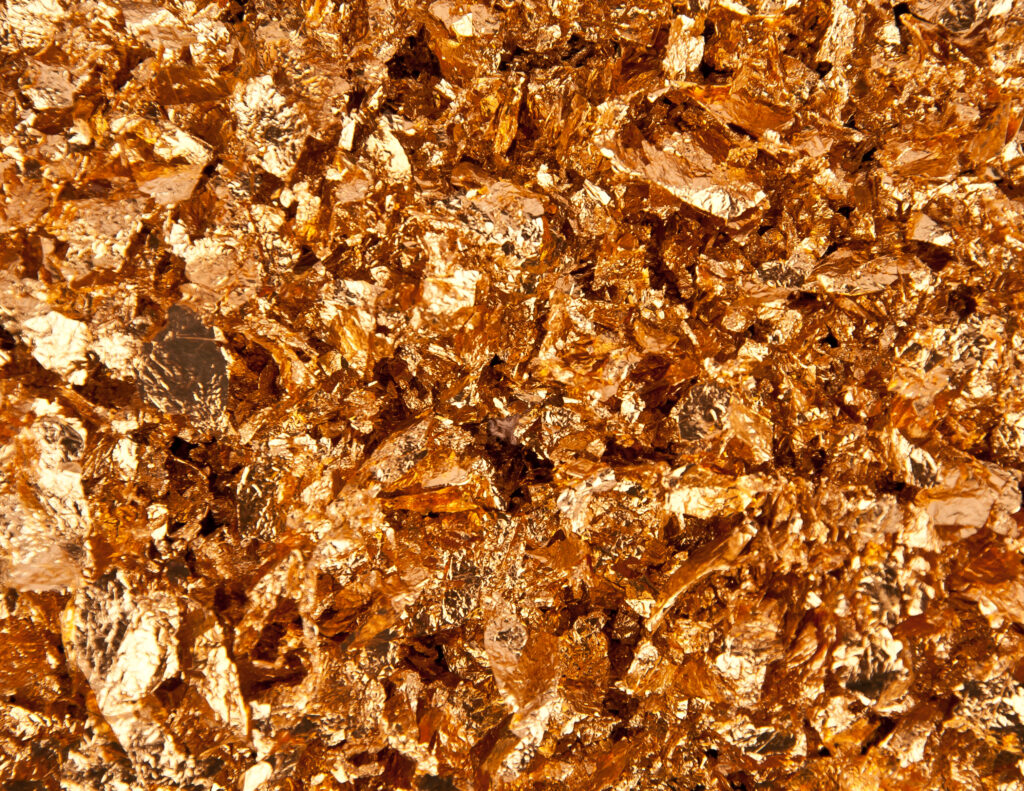
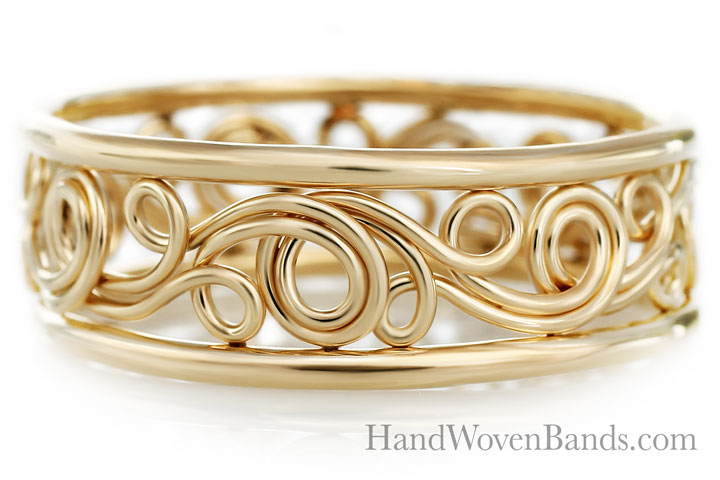
18k gold is 75% pure. Is it brighter and richer than 14k but not as much so as 24 and lacks the orange hue. Generally speaking, European countries tend to lean toward 18k for their engagement and wedding rings. Its purity level makes it ideal as a hypoallergenic metal, it’s hard enough to stand up to everyday wear but it contains very little other alloy so tends to not cause allergic reactions for sensitive skin. Everyone is different though, don’t take my word as absolute, afterall, I’m a jeweler not a doctor!
18k is the highest karat Todd tends to work with, especially for rings. But keep reading for a fun story Todd has about a client that wanted something rather unique in a higher karat!
14k gold is 58.3% gold and its yellow is a little subtler than 18k. It’s generally considered the American standard for jewelry but is also often used in Mexico and parts of Europe. It is extremely durable so it’s excellent for all types of jewelry from delicate chains to the wedding rings you’ll wear day in and day out. Most of our rings are woven in 14k and it is definitely the popular choice.

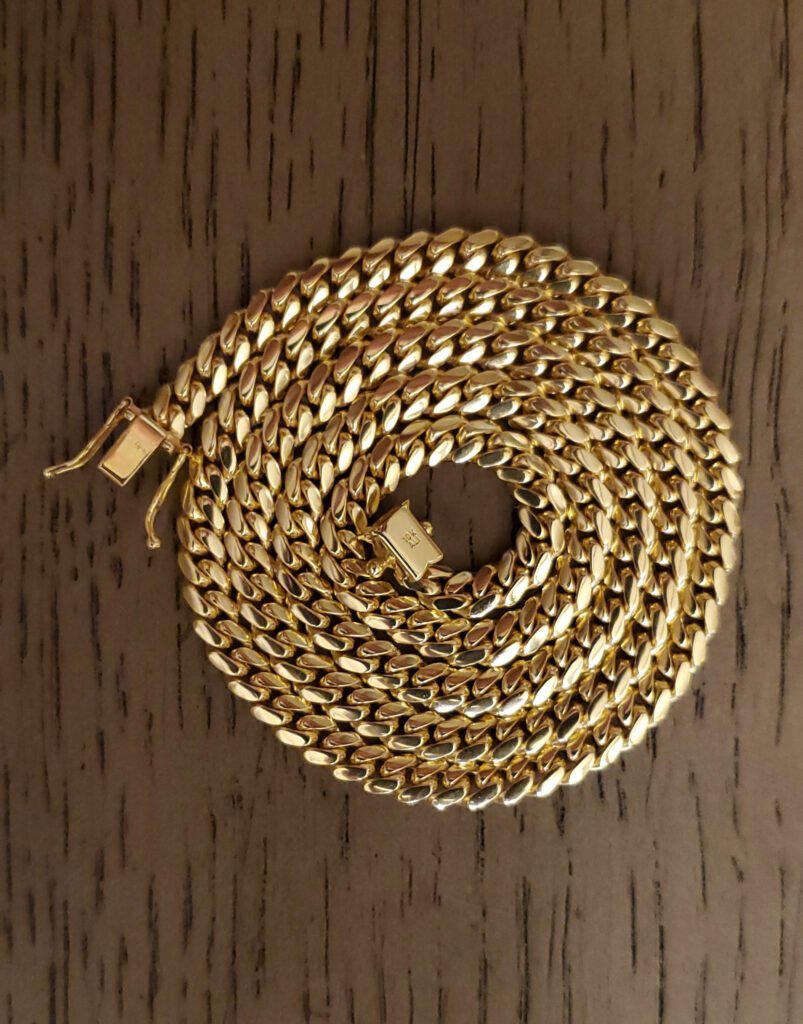
10k is 41.7% gold and is the lowest karat weight that can be legally considered “gold” in the US. It has a very pale yellow appearance and is the most likely to cause an allergic reaction if you’re sensitive to nickel. Because of its extreme hardness, it does not braid evenly so Todd almost never works in 10k gold.
In order to achieve the white color, a mixture of platinum, palladium, nickel and zinc will be added as alloys.[23] It looks white on its own but when compared to a true white metal like pure platinum or rhodium, you can definitely see the yellow of the gold within. Todd has a great way of explaining it.
“Think about mixing paint. If you’re starting with yellow, it doesn’t matter how much white you add, you will never be able to get rid of that underlying yellow tint.”
Other jewelers often get around this by plating their rings in rhodium to achieve that bright, pure white. But because we work in individual strands and braid them together to make a ring, we cannot do this while maintaining each individual color.
This isn’t a problem if you’re ordering an all white ring because then it can be plated like any other. But since our rings often have multiple colors of gold in one ring, we can’t just plate some of the strands in the ring – it’s all or nothing. We use the brightest white gold that is offered at our suppliers but if you want a truly bright white, I suggest considering replacing your white gold strands with platinum.
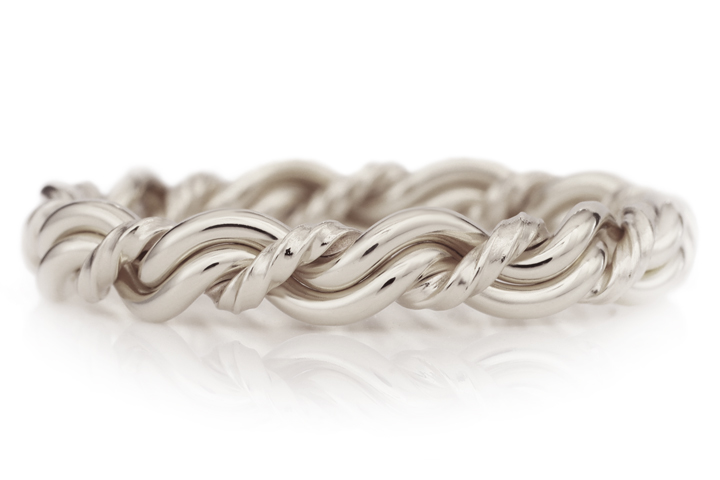
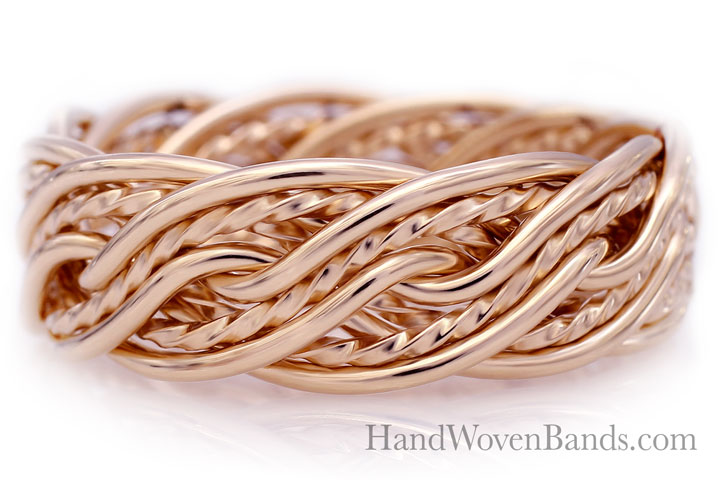
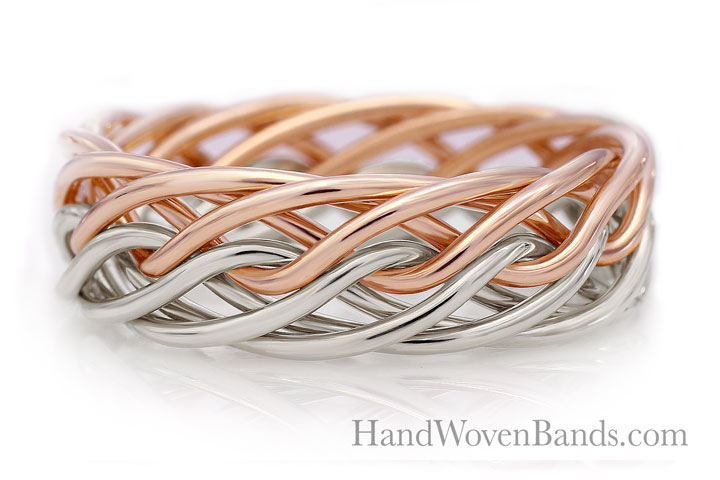
Sometimes referred to as “red gold” or even “pink gold”, rose gold gets its unique color by being alloyed with copper and a little bit of silver.[23] And I am very biased towards rose gold, I just love it! Especially combining it with platinum, it’s so, so, so pretty!
Something interesting in regard to weaving: because of the copper, rose gold is the easiest of the metals to weave. However, that is a double edged sword as that means it can make weaving tricky when combined with white gold – a notoriously difficult metal to work with. Because of the difference in hardness between the two, the white strands can pull and unbalance things in the weaving. Todd is an absolute master at combating this but I am definitely still learning!
This leads me to a final point about rose gold. If you are getting a ring with both rose and yellow gold, I highly suggest you get it in 18k yellow and keep the rose 14k – this will give you the most striking contrast. Otherwise the two together in 14k can look quite similar in anything other than direct sunlight or a pure white light.
Quick aside: did you know we specialize in Tri-Tone rings? To get the absolute best color combination, consider this magic trio: 18k yellow gold, 14k rose gold and platinum. If you want vibrant color contrast and a really stunning ring, this is absolutely the way to go!

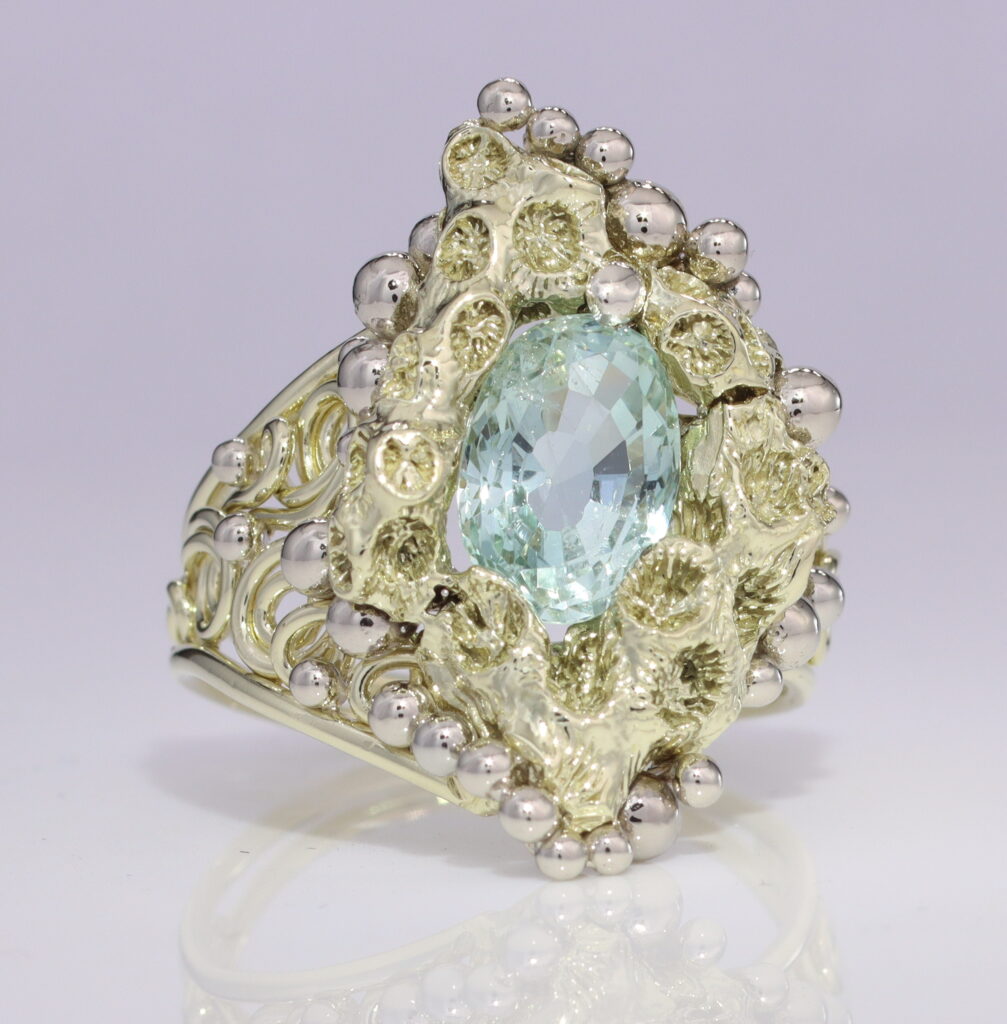
Bet you didn’t know about this one! Green gold is actually the only naturally occurring alloy of gold – remember those electrum coins that were used pre King Croseous? Well electrum is a mixture of gold and silver – and sometimes copper. [23]
Todd does a lot of his sea work with green gold, like his coral rings and some of his shell work. But He’s also done really elaborate pieces with this unique color – like this piece we affectionately call “Woven”.
Are many of you aware he created a mermaid crown out of green gold, platinum, white diamonds, teal diamonds? It’s one of his Masterpieces and it’s just stunning! He’ll be releasing a video on it soon and it will be worth the wait.
Todd also wove his own wedding rings out of platinum and 18k green gold!
Speaking of Todd…
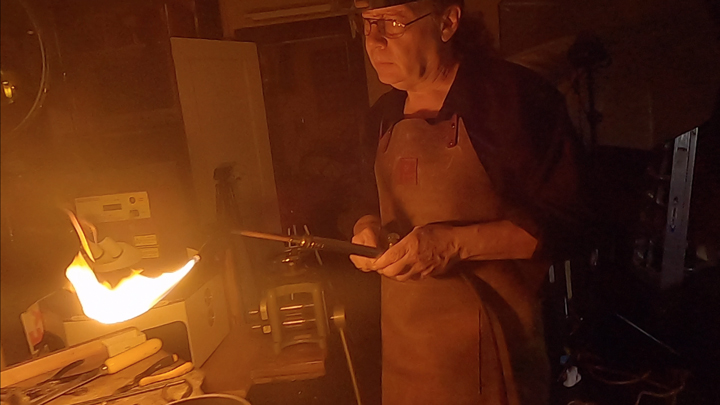
Coming soon
Well, my friends, that leads us to the end of our deep dive into gold. I hope you enjoyed yourselves and learned something new. And I hope you join me again for our next foray into the fascinating world of the jewelry trade.
I’ll see you next time, fellow apprentices!
© 2023 All rights reserved